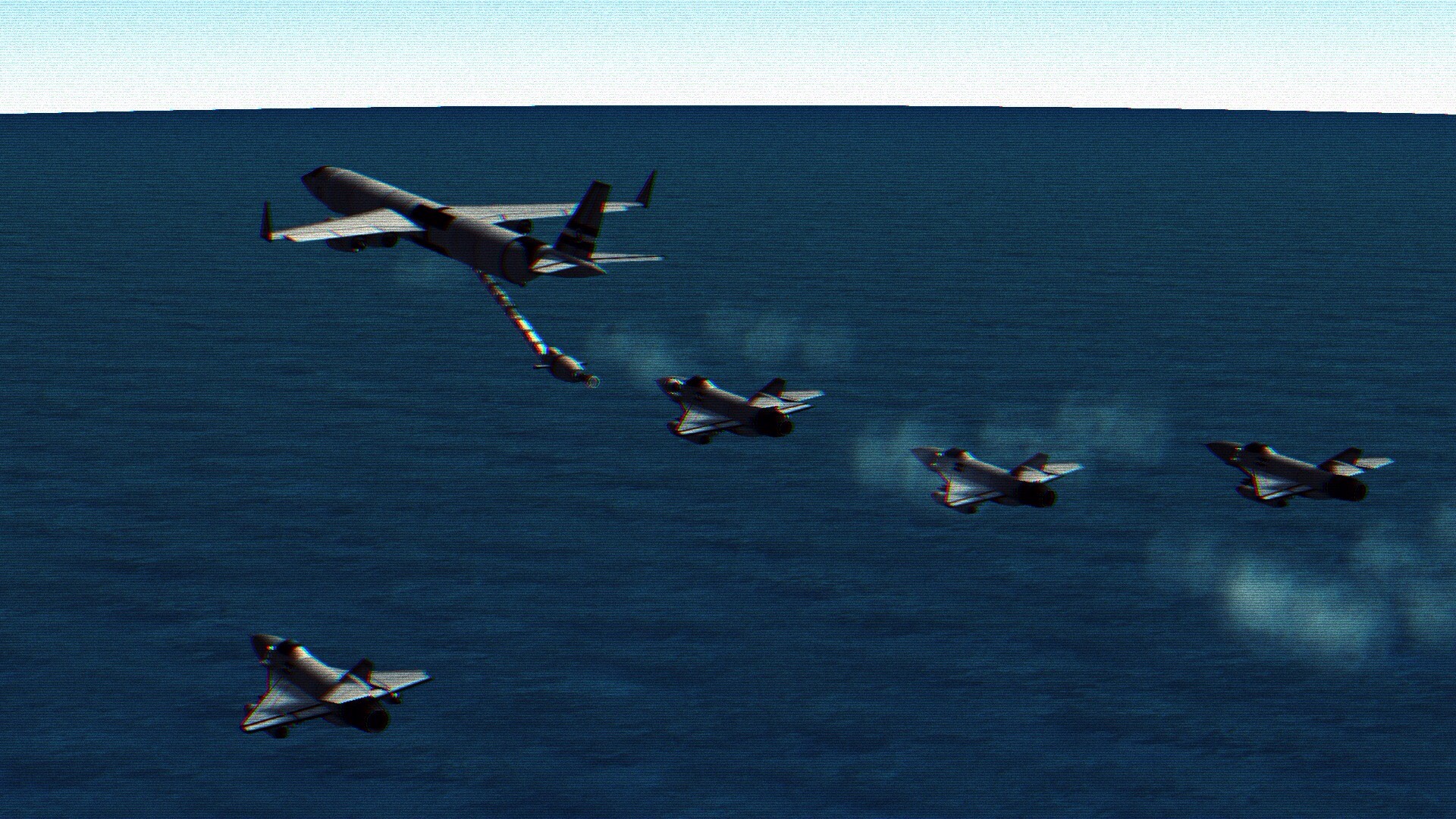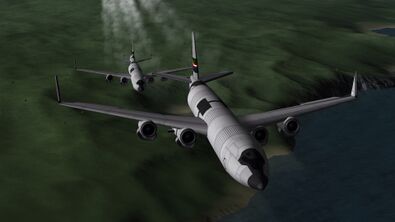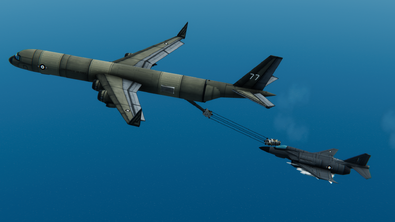KZ-10A Paladin
|
KZ-10A Paladin
|
|||||
|---|---|---|---|---|---|
 |
|||||
| Role | Tanker | ||||
| National Origin | Arkadii-Zokesia | ||||
| Production History | |||||
| Designer | Ward Industries | ||||
| Service History | |||||
| Used By | Arkadii-Zokesia (former)Radivosa | ||||
The KZ-10A Paladin is a large, four engined aircraft designed to fulfill the strategic role of tanker in the Arkadii-Zokesian Air Force. It is one of two tanker designs utilized, and has been certified to refuel all Zokesian aircraft designs.
Initial Service
Initially built to extend the range of Arcovii-Zokesian aircraft to meet the requirements of extended conflict across Kerbin, the KZ-10 first flew in 2084, with additional aircraft delivered over the next two years. The aircraft was designed to operate bot has an AWACS aircraft and a tanker, allowing interchangeability of parts in wartime enviornment. The production run was halted after 16 aircraft. Initial reviews found the KZ-10 was well liked by its crews. Of the 16 built, four were exported to Surnay and Radivosa, with the rest retained for Zokesian use. The Radivosa deliveries were in turn seized by Konig and used with great success by the Konig Air Force.
The KZ-10 Was used continuously from 2084 to 2122, serving the Zokeisan Air Force as its sole tanker/AWACS aircraft. With the end of the Big Three in Zokesia and a downsizing of the military, the KZ-10s were put into storage in eastern Zokesia and largely forgotten, as UIF tanker aircraft and naval refueling aircraft like the Z-5 gradually took over the roles when the military required them again in the late 2130s. Zokesian projection of power in the mid 22nd century shifted away from the air force and toward the navy with such operations as Operation Carolinas proving the Zokeisan Navy was far better equipped to fight abroad than the Air Force, although the latter
22nd Century Refit
In 2169, the need for additional refueling aircraft came when the evacuation of Arvene began across the ocean. The KZ-10As remaining in the boneyards of eastern Zokesia were pulled out of storage and refitted. Four aircraft became fully operational, with the rest becoming useable for spares. They participated in 123 sorties over the following year, until entering semi-retirement and use as testbed aircraft for newer refueling prototype booms and Advanced Fighter aircraft.

